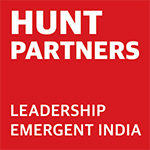When you come across a report titled as “Strategy is Dead, Long Live Strategy” by one of the world’s leading strategy consulting firm, you better take note of it. However, when the opening sentence of that report contains “Far from it” – you know the intent behind the catchy title, and it’s a big sigh of relief for management consultants like us who focus on taking strategy from Boardroom to Frontline leveraging Balanced Scorecard (BSC) framework. We all know that having just strategy in place will not help any organization become successful, it needs to translate into action on the frontline. However, for a superior execution in the direction of achieving long term goals, strategy should not only be understood but also be believed in and actioned by the company’s middle management and frontline. Is there an established way to create that “Pull” from the whole organization? The answer is a resounding Yes, and the Balanced Scorecard (BSC) helps in achieving just that. As a part of BSC implementation through facilitated workshops, employees break down corporate strategy and associated ambitious goals into objectives and then set long-term and short-term targets for themselves. In our long corporate and consulting career, we have yet to come across such an intuitive and comprehensive framework that bridges the gap between strategy and execution seamlessly. And we are not alone, BSC is now one of the most widely practiced management frameworks, boasting an adoption rate of more than 50% amongst Fortune 1,000 companies. The Balanced Scorecard concept was selected by the editors of Harvard Business Review as one of the most influential management ideas of the last 75 years.
The Balanced Scorecard (BSC) was developed by Dr. Robert S. Kaplan of Harvard University and Dr. David P. Norton as a framework for measuring organizational performance using a more balanced set of performance measures. The system has evolved over the years into a fully integrated strategic management system to ‘Translate Strategy into Action’. In our experience,
BSC implementation helps organizations in:
• Execution – Translate strategy into action for frontline Balanced Scorecard uses Strategy Map to translate strategy into action. Strategy Map is a tool to convert strategy into a visual representation of the cause-andeffect relationships of most important components of a strategy. As an example,
the following high-level map brings out strategy of an Indian pharma company to solidify its position in US Generic market. As you can see that to “Achieve ROI in US Dermatology Generics”, the company needs to be “Pharmacy Retailer’s First Choice”. The cause-and-effect relationship is clearly established that frontline can easily understand. Strategy Maps are first created at the
Strategic Business Unit (SBU) level and then for each unit of the SBU e.g. Marketing, Operations, SCM, HR etc. A typical way to create maps is to carry out workshops and promote active participation of middle management. The workshops allow the middle management team to realize their critical role in executing strategy. This helps in empowering the staff and taking decision
making right into the hands of doers.
• Alignment – Row the boat in the same direction The “cause and effect” relationships between strategic objectives clearly establish how each business unit is an “Internal Client” for the other business unit, and the need for
business units to collaborate to reach longterm goals. The key lies in the rigor applied in developing strategic business objectives in a room with all participants creating an environment of co-ownership and bringing alignment.
• Focus – ZERO distraction The exercise of teams themselves setting three-to-five-year goals for business units with intermediate monthly/quarterly targets brings one hundred percent focus on achieving those targets – in other terms effective focused execution becomes the key. In addition, selecting only strategic initiatives, to achieve the goals, with clearly defined
accountabilities and commensurate budgets helps rationalize initiatives, optimize resource allocation and keep the organization focused on delivering.
